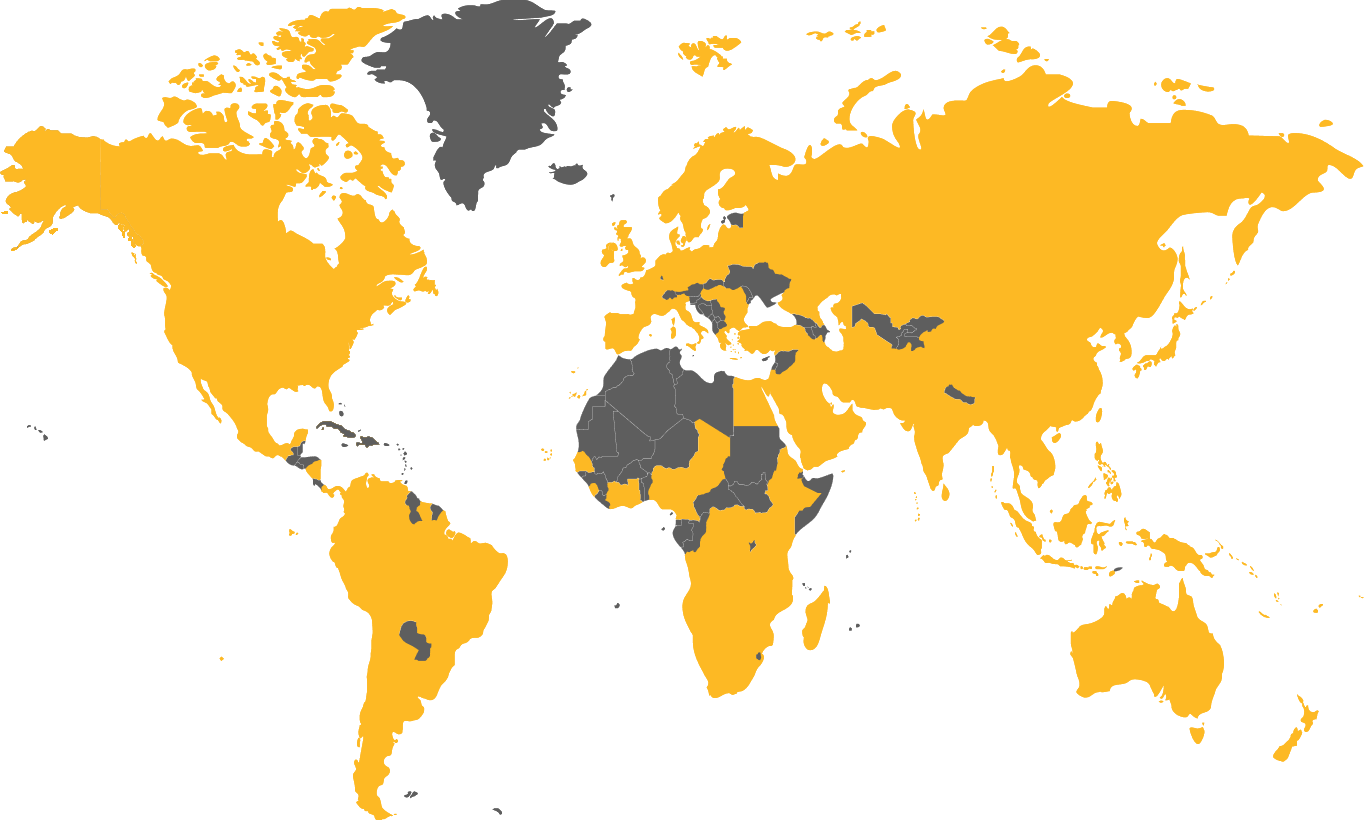The TEPPFA and PE100+ Association have provided significant information through research on the life expectancy of PE80 and PE100 pressure pipe systems. This includes data taken from studies and reports on buried pipe systems, which show minimal degradation confirming life expectancy of over 100 years.
Design vs. service life expectancy
For PE pipe systems, there is a difference between the expected design life and the actual life of the system. It is important to remember that in theory vs. practice, there are a number of key differences to factor:
- Lower actual pressure in service over entire life
- Lower temperature exposure in-ground
- Wall thickness tolerance always in the zero “plus” tolerance range
- Design life includes a safety factor
Design basis of PE pressure pipe systems
The 50 year design basis and minimum service life for a PE pressure water or gas pipe systems is secured through the established standards ISO 9080 and ISO 12162. ISO 9080 provides an extrapolation method to estimate the 97.5% lower prediction limit of the stress (σLPL) which a thermoplastic pipe is able to withstand for 50 years at 20°C.
Extrapolation is made from data obtained through hydrostatic pressure tests carried out at different temperatures in accordance with ISO 1167-13 and ISO 1167-24. ISO 12162 establishes a classification and designation system for thermoplastic pipes, based on their minimum required strength (MRS) derived from their σLPL. A PE pipe with 8 MPa ≤σLPL<10,0 MPa has a MRS of 8 MPa and is designated as PE 80.
A PE pipe with 10 MPa ≤σLPL<11,2 MPa has a MRS of 10 MPa and is designated as PE 100. ISO 12162 also specifies a method for calculating the design stress σS from the MRS and a design coefficient C (σS=MRS/C). Unless otherwise specified in a specific product standard, a minimum design coefficient (Cmin=1.25 for PE80 and PE100 water and Cmin=2 for PE80 and PE100 gas) is used.
The product standard series of ISO44275 as well as the EN122016 specifies the specific requirements for a modern solid wall PE80 and PE100 pressure piping system and its components intended for the supply of water under pressure. In the last draft edition series, the scope of ISO 4427 of water for human consumption has been extended to raw water prior to treatment, drainage and sewerage under pressure, vacuum sewer systems and water for other purposes.
The product standard series of ISO44377 as well as the EN15558 specifies the specific requirements for a modern solid wall PE 80 and PE100 pressure piping system and its components intended for the supply of natural gas under pressure, mainly used for the distribution and house connection systems up to 10 bar for PE100.
It is recognized in standards (reference 5, 6 ,7, and 8), that “research on long term performance prediction of PE water and gas distribution systems shows a possible service life of at least 100 years”.
Whilst initial material improvements increased the pressure resistance (PE 63 to PE 80 and to PE 100), considerable progress has been made in recent years by increasing the resistance to slow crack growth (SCG). This designated PE100-RC (RC: Raised Crack resistance) piping material requires a separate number of tests to assess the SCG performance; whilst all other material and product requirements of PE100-RC are identical to the well-known and established PE 100.
Piping systems made of a PE100-RC material can be used for alternative installation methods, for example when more surface damage might be encountered or for installations where excavated soil is used as bedding material (extract from prEN1555-1 Annex A).9 All 4 of the above mentioned application standard series will include PE100-RC in their next revision in the coming years, starting with the EN1555 series.
Design basis of PE pressure pipe systems
Publications and Dig-up studies proving a 100+ year service life for PE pressure pipe systems
Polyethylene material developments started around 1953 with the first generations of PE40, PE50 and PE63; these materials have exceeded 50-70 years service life and are partially still in service. Today markets are using PE80 materials mainly due to its flexibility and ease of installation especially in smaller dimensions, but the majority has moved over to PE100 rated systems in the last 30 years.
Pipes for water can be extruded in sizes of 16mm up to 3500mm. PE gas pipe systems are in use since about 60 years with very low failure rates even under ground-movement conditions. Gas pipe size reach from 16mm up to 800mm.
Many dig-up reports have been published or presented in conferences about the mechanical performances of PE pressure pipes covering a variety of decades of continuous service conditions, locations and applications. Many PE pipe systems have already exceeded the end of the specified design life point of 50 years, without any indication within the failure statistics maintained by the utilities of any age-related reason. Examples are listed below:
At the Plastic Pipes XIII in Washington in 2006, Schulte10 reported that pipes produced in 1956 and installed in October of the same year in a pressure-testing rig had actually passed 50 years of successful testing as predicted. Further examples of the longevity of PE pipes are given in this paper together with an assessment of latest generation pipe resins, showing potential for application extension to 100 years.
In 1997 U. Schulte11 showed, that with standardized extrapolation method ISO/TR 9080 a service life of over 100 years can be expected for bimodal PE-HD types.
In 2007 J. Hessel12 summarized the investigations on used pipes from 1st generation HDPE and calculated already high residual service life for these pipes. Due to the extreme material improvements in stress crack resistance a minimum service life of 100 years is proven for advanced PE100 materials (PE100-RC). The thermal ageing is taken into account and was tested at higher temperatures. With the “Arrhenius” law a failure time due to thermal aging of more than 460 year for service temperature 20°C was calculated.
In 2009 H. Brömstrup13 published the third edition of the booklet “PE100 Pipe systems” and concludes on pages 34-35 that the bimodal PE100 materials can be considered valid for a 100year lifetime.
Japan Polyethylene Piping system & Integrated Technology Association for water Supply (Politec14) conclude based on extrapolation of results and calculations that there is a safe design concept to conclude on a 100 year practical lifetime.
J.M.B. Sanders15 concludes that the life of a service pipe exceeds 100 years based on different methods applied, investigation of the additive level remained via OIT method and analyzing the failure mode in the different stages.
U.K. Water Industry (prepared and published by WRc16), concludes a 100-140 years expected lifetime based on PE80 MDPE pipes investigated at different temperatures 20°C, 60°C and 80°C for 13years and extrapolated stress rupture curves.
In major markets like Europe, Russia, Africa, Middle East and South America, ready-made black and coloured PE pipe compounds are provided by the resin manufacturers with little or no variation in formulation over the years. The performance based EN and ISO PE pipe application standards are designed with safety margins and the quality systems in place at the PE pipe manufacturers ensures a traceability of the raw materials used.
The above consistent results obtained across all regions, demonstrate that a reliable service in excess of 100 years can be expected when a readymade compound is used in the quality pipe production process and the installation has followed the industry standards.
Please contact us for machinery and equipment that supports HDPE pipe life expectancy of 100+ years.







